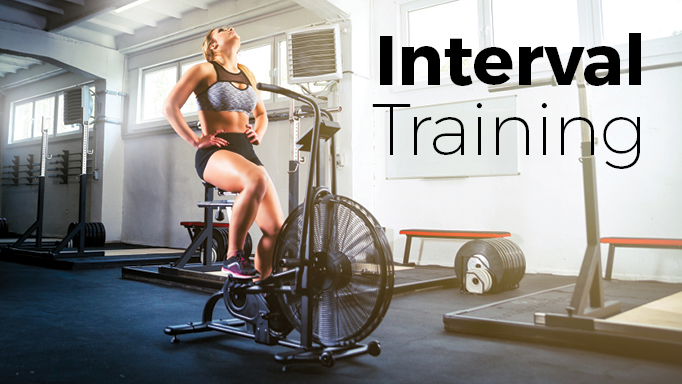A common barrier to instituting an exercise regimen is lack of time. As riders, we already spend a great deal of time at the barn, in the saddle, caring for our horses, and in activities surrounding our sport. However, while riding is very specific training for a very specific sport, it doesn’t cover all of our exercise bases.
While we are often concerned with readily-available fitness markers such as body fat and endurance, other important exercise parameters are markers for insulin sensitivity, muscle health, and VO2max (a measurement of the maximum amount of oxygen that an individual can utilize during intense exercise, which reflects the cardiovascular system’s ability to utilize oxygen, disperse it to the tissues, and turn it into productive energy).
Interval training – short, hard bursts of maximal or near-maximal exertion – can elicit similar or even superior changes in a range of physiological, performance, and health-related markers in a wide range of individuals. Martin Gibala, a PhD at McMaster University in the department of Kinesiology who has studied the effects of interval training extensively, wrote a book called The One Minute Workout detailing the science behind shorter and more efficient training. These intervals can improve the body’s ability to utilize blood glucose and store it for energy, and improve transport capacity, fitness levels, and decrease body fat and blood sugar, thus conveying health, fitness, and performance benefits across the board – all within a fraction of the time commitment of traditional endurance exercise.
These benefits can be achieved by as little as three bouts of 20-25 minutes of exercise per week, which include a warmup, cool down, and interval training. As a lot of us train in the Great White North where inclement weather is common, fortunately these intervals can be done indoors on a variety of equipment, or just using body weight. Options include stationary bikes, rowers, treadmills, ellipticals, sprinting tracks, or exercises such as burpees. The beauty of interval training is that it can be adapted to almost any exercise, as long as you are working to maximum effort on each interval and incorporating adequate and varied rest.
Each session is set up as follows:
- 2 minute warmup at a light perceived* exertion
- 5 minutes of near-maximal effort/perceived exertion
- 2 minutes of active recovery**
- 5 minutes of near-maximal effort/perceived exertion
- 2 minutes of active recovery
- 5 minutes of near-maximal effort/perceived exertion
- 3-4 minute cool down at the same light exertion as the warm up
* how hard you feel your body is working
** walking around or light exertion to prevent blood pooling in the lower extremities and/or fainting
This is an optimal example of an interval workout that allows for periods of maximal effort with periods of rest to replenish stores enough to perform again after a minute or two.
A more beginner pattern of interval training can look like the same 2-minute warmup with 20 minutes of 1-minute maximal exertion followed by 1 minute of active recovery, followed by a 2-3 minute cool-down. This lowers the amount of time spent in maximal effort per interval, but provides an effective workload overall.
It is also important to vary rest intervals from between 1-4 minutes. A 1-minute rest interval allows for some recovery, but it takes roughly 4 minutes to completely replenish stores. As the rest/active recovery interval increases, stress is decreased on the body to improve performance in the next exertion interval. However, our body needs the stress to cause adaptation and increase performance, so there is benefit to varying the time of rest intervals throughout the week.
How to start interval training is different for everyone depending on their fitness and their goals. Of course, it’s advisable to consult your doctor before starting any new fitness regimen.

